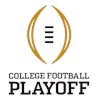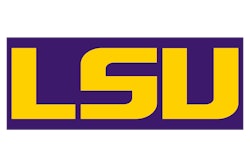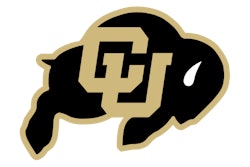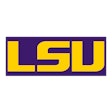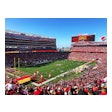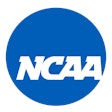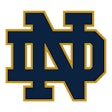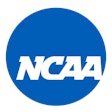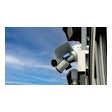Copyright 2017 Digital First Media
All Rights Reserved
The Daily News of Los Angeles
It was late December, and the Clippers had built a healthy first-quarter lead against the Denver Nuggets at Staples Center. Far from the action, in a trailer parked in the unglamorous concrete bunker of the arena's outer ring, Matt Drummond studied a panel of monitors.
"Nice pass," Drummond announced to the production crew working around him.
DeAndre Jordan had drawn his defender toward J.J. Redick and slipped toward the rim. Redick didn't miss him, whipping a one-armed delivery into the paint. Without a dribble, Jordan turned and dunked with two hands, swinging from the rim like a gymnast preparing for a handstand on the high bar.
"That was a good one," Drummond said into a microphone. "Just hold on to that until we get a stoppage."
If the play was impressive on the grainy screens Drummond was studying, a replay would be even more emphatic in virtual reality.
The NBA catapulted live streaming in virtual reality, or VR, toward the mainstream early in the fall, announcing that Newport Beach-based technology company NextVR would broadcast a live game every Tuesday night during the regular season. It is available to subscribers of NBA League Pass, which, for $200, allows fans to watch any out-of-market regular-season game.
And now, one game a week can be, not just watched, but experienced.
From AB: Virtual Reality’s Role in the Future of Sports
"In some ways, we could still be at a point in time where a lot of people don't yet know that they want this in VR," said David Cramer, NextVR's chief operating officer. "The thing that we've seen is that when people do see it, it just blows away their expectations."
A VR headset can be purchased for as cheap as $15. NextVR was previously only available on Samsung devices, but earlier this month became available on Google Daydream, the technology giant's new VR hardware.
Inside the truck at Staples Center, executives in suits watched the broadcast through large headsets, similar in size and appearance to ski goggles, while the team of production specialists performed largely traditional tasks: mixing audio, adjusting shading, cutting highlights. What makes the VR truck unique, however, was two machines humming unsupervised in the back. Proprietary encoders process the broadcast and send it back to an editing hub within NextVR's office at Fashion Island.
A team of technicians makes sure everything is in order, then broadcasts to the world.
"The result is a really strong sense of presence," said David Cole, who helped found NextVR as a 3-D company in 2009. "A vivid sense."
Cole, a hip executive with tightly shorn gray hair sports washed jeans, Vans and a slim cut blazer, like Flea-turned-corporate.
He talks about stereoscopic imaging and data points and platforms on which NextVR will soon be available. For now, it's just available through Samsung devices and the recently launched Google Daydream.
Virtual reality is in its infancy, and access remains an issue. Those in the field have all developed their own ways for answering the most common question asked by those yet to experience VR: What's it like?
"What it's like," Cole said, "is being inside a video game of exactly this world."
Natural fit?
When the Clippers' Jordan dunked off Redick's assist, he flew right at the bug-eyed camera, and in turn, viewers might have been compelled to duck or move out of the menacing center's path.
A game in VR is not so much "shot," in the traditional sense, as it is reconstructed. Each virtual reality camera actually consists of two lenses, needed to patch together a life-like experience. First, the camera builds a "roughly hewn" mesh of its surroundings, said Cole, on top of which the video is layered.
A traditional broadcast uses twice as many cameras as one in VR, and producers cut from one to the other with far more frequency. In VR, three cameras are primarily used, giving the viewer a consistent view either from courtside or behind the baskets.
When Chris Paul inbounded the ball from the sideline against the Nuggets, he appeared to be mere feet from the viewers as though they were sitting courtside.
When NextVR broadcast a Lakers game against the Brooklyn Nets on Nov. 15, a pair of employees took a headset around Staples Center, offering it up to anyone who wanted to step into virtual reality. Veteran Lakers forward Metta World Peace volunteered.
With the headset snug to his face, his head began weaving as he followed the action, uttering sounds of approval and surprise.
"People have this in their homes?" he said "Our game's gonna be like this tonight?"
For the most part, this is how NextVR has built its audience, through hands-on trials.
"It's the hardest thing I've ever seen to describe to somebody what the experience is like," Cramer said. "We still try. There's no replacement for that experiencing it yourself."
In one highlight that is part of a demonstration reel, New York Knicks point guard Derrick Rose hits a game-winner and runs right up to the viewer to celebrate.
"I've actually been lucky enough to sit courtside at a game," Cramer said, "and this is exactly what it's like."
NextVR is at the top of the industry of providing live and on-demand content in virtual reality. Sports are a natural fit, and the company has broadcast the U.S. Open, allowing viewers to choose which hole they wish to watch; boxing title bouts; MLB's All-Star Home Run Derby and for three weeks in the fall experimented with an immersive NFL highlights package
It's only with the NBA, however, that NextVR has been able to provide a weekly live experience. It's a marriage made possible by logistics as much as anything.
"It takes place in a relatively small space," Cramer said, "which has advantages for virtual reality. ... It just becomes a natural fit."
Neither the company nor the NBA release viewership numbers, so it's tough to measure how successful the partnership is in its first year.
What Cramer does say is that "the numbers are growing at a rate that satisfies us as well as our content partners."
Cramer joined NextVR in the spring of 2015, having previously worked as general counsel of Quest Software, where he helped grow the Aliso Viejo-based company into a juggernaut that Dell acquired for more than $2 billion in 2012.
When Cramer joined NextVR, the company operated out of a smaller office in Laguna Beach. The company employed 15 people.
He spoke in a conference room while scores of employees worked on monitors. The sleek and modern office space was punctuated by posts wrapped with images of partners, like Steph Curry with a ball in his hands. Golden State Warriors owner Peter Guber is a NextVR board member, and the Warriors served as VR guinea pigs in their 2015-16 season opener.
The then-defending champions' game against the New Orleans Pelicans was the first live sporting event broadcast in VR.
As the product has grown, so has the workforce.
"We are approaching 100 people," Cramer said proudly, pointing to technology, innovation and customer relations as primary areas of growth.
NextVR identifies not just as a technology company, but also as a broadcasting company and a creative collective.
"You can't just be one of those things and deliver the experience we're doing," said Tim Amick, a vice president of creative.
Cramer and others at NextVR are tight-lipped about what comes next with the company's relationship with the NBA. There is the possibility of doing more games, and additional events, but that is kept close to the vest.
"It isn't so much the volume of doing a bunch of games," Cramer said, "it's more about the experience that's out there. ... What we're focused on doing is continuing to add to and refine the viewer experience."
Cole, the NextVR co-founder, has helped develop the technology over the past seven years. He acknowledges the NBA partnership has been a measured approach, but one that is making an impact, he said.
"We've darkened the skies," Cole said.
Or, as executive chairman Brad Allen put it, borrowing a metaphor from another sport NextVR has broadcast, "We're in the bottom of the first inning with this thing."
Read More of Today's AB Headlines
Subscribe to Our Daily E-Newsletter
Terms and Conditions Privacy Policy












